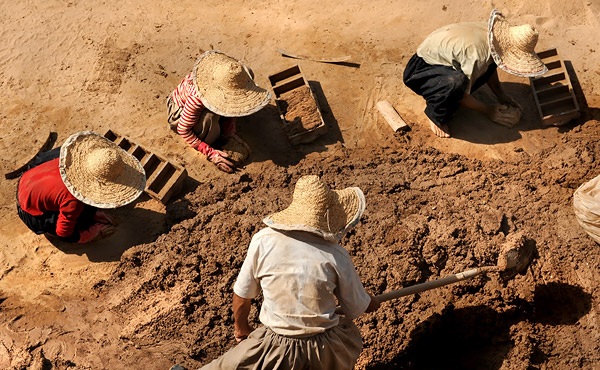Brick is one of the building materials that has been used in construction for a long time. This product was traditionally and manually produced in the past and today it is produced in a machine and fully mechanized. Baking a brick has steps that you can get acquainted with in the following:
1- Preparation of suitable clay: The clay used for the production and baking of bricks does not need to be completely pure, only materials such as wood, charcoal or plant roots should not be in it, because these materials burn in the oven during baking and replace them. It is depleted and therefore reduces the strength of the brick.
2- Applying soil for bricks: Applying soil means that the soil should be free of any foreign substances such as clods, etc. and also organic materials should not be used in them. To do this, the soil is aerated, then ground and salted. Then the soil is dried and if there are large grains, they are removed. The soil is ready for brick production.
3- Making flowers: To produce flowers, you should use soil that does not have impurities and also make sure that it does not give chemical composition in combination with clay. To produce flowers for twenty grams of soil weight, water must be added to it. After adding water to the desired soil, the soil and water should be mixed well to make all the ingredients wet, and then leave it for a while until the water reaches all parts and becomes wet, and finally the flower becomes a uniform paste. Come on. Then you have to knead the flower, which is done by kicking it. Water consumption should be kept to a minimum as excess water causes the clay to dry later and increases costs.
4- Molding (bricklaying): In ancient times, molding was done manually to produce bricks. In this way, a mold was made in the desired shape of a brick, then it was filled with mud and pressed by hand to fill the empty parts, then its surface was smoothed by hand. Finally, the mold was removed and the bricks were molded in this way.
5- Drying the bricks: After molding the bricks, they were not touched for a few hours to maintain their geometric shape, then they were removed and put together from a narrow part. The reason for this was that more parts Blow them. Of course, this also had disadvantages, including the fact that because their surface dried faster than elsewhere and the brain was still wet, it cracked.


 فارسی
فارسی